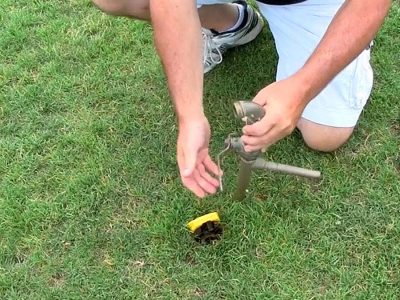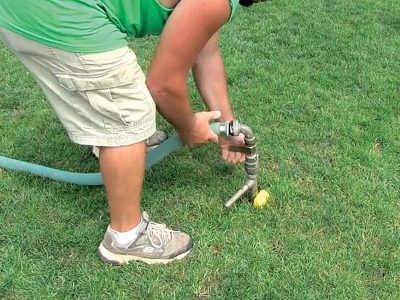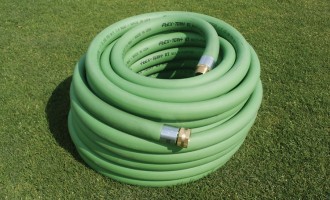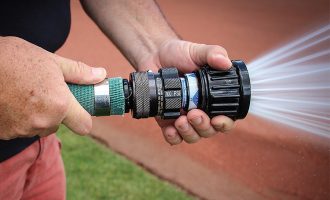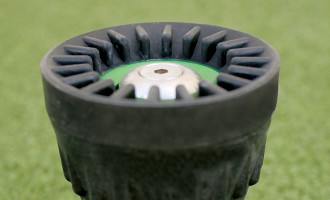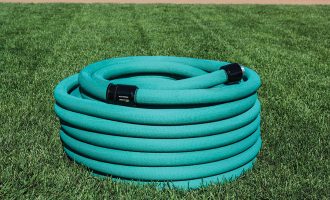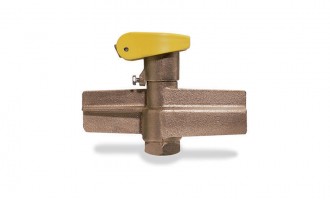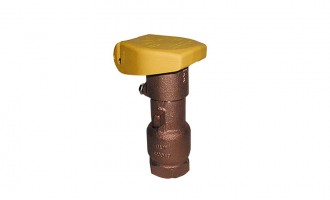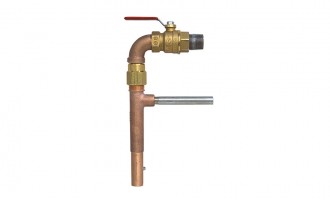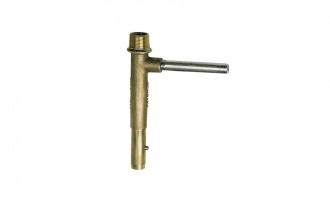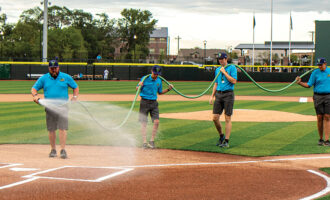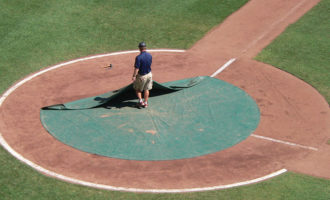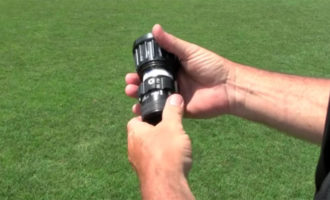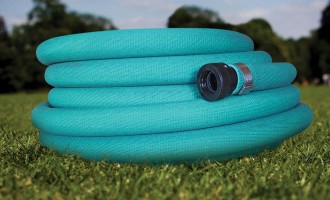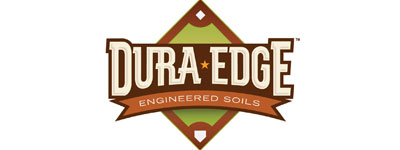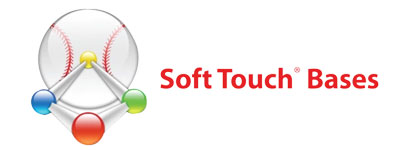Hoses & Nozzles
Tapping into on-field water...
Most ballfields with water access will have one or more manual quick coupler valves located on the playing field. They’ll be buried independently or located in a valve box that is buried in the ground and has a green cover. If they’re buried independently you’ll need to search for the cover of the valve itself.
The Quick Coupler valve is activated by placing a Quick Coupler Key into the valve. Align the nipple(s) on the key to fit into the notch in the valve. With the key properly inserted, turn clockwise between 3/4 and one full rotation to turn the water on. When done, turn the key counterclockwise to turn the water off.
Watch a video demonstration on the next slide…
Quick coupler valves demonstration...
Using a quick coupler key...
We recommend a quick coupler key that has been outfitted with a brass swivel and a ball valve. When attaching a hose, the brass swivel will reduce stress on the hose by allowing it to freely pivot around the key as you move about without bending or kinking the hose.
The ball valve will isolate the water pressure that builds up in the hose when the nozzle is closed. Always close the ball valve first to isolate the back pressure before turning the quick coupler key off. If you don’t close the ball valve all of the back pressure could release all over the operator when the quick coupler key is turned to the off position.
Watch a video demonstration of the quick coupler key on the next slide…
Quick coupler key demonstration...
How to avoid taking a bath...
Go big, it's really the only way to go...
Size matters. To apply water to the infield skin, mound, or home plate area you’ll need a LOT of water. Ideally, you will have access to a larger hose that can deliver the volume of water you need to speed things up.
Smaller garden-size hoses that are 5/8-inch to 3/4″ in diameter are just too small to do the trick. It takes way too long to put the necessary water down.
A 1-inch diameter hose is the minimum you want to work with. Hopefully your water source can deliver adequate volume and pressure…
Fog & Stream: The nozzle essentials...
When it comes to nozzles, there are a lot of options for groundskeepers — from basic nozzles to ones with lots of bells and whistles. But it comes down to this: at a minimum your nozzle must be capable of both a tight stream as well as a fine fog.
Before twisting your nozzle onto the hose, make sure both are free of any soil, topdressing, or grass clippings. If necessary, flush these particles out of the hose and the base of the nozzle. If you don’t flush these out — especially the hose — your nozzle could become clogged with particles and that’ll create problems with the spray patterns.
Watch the videos on the next two slides with more info about the types nozzles and a demonstration of flushing out a hose…
The various nozzles...
The importance of flushing out the field hose...
Take a look back...
Those are the basics for accessing on-field water. In the next sections we’ll get you familiar with how to manage moisture around the parts of your infield, but let’s quickly review this section before moving on.
This Pop Quiz will help give you confidence that you’re ready to continue. If you do not see the quiz button below, please log in at GU to take the quiz.
